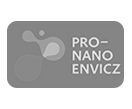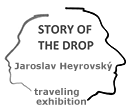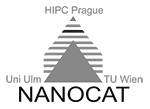Research Interests of Department of Biophysical Chemistry
Members of the department of Biophysical Chemistry represent a multidisciplinary team with expertise in chemistry, physics, and biology that aims at understanding biologically relevant processes at the molecular level.
Majority of the department (Hof Fluorescence group) has its roots in the development of fluorescence spectroscopy and microscopy methods. Specifically, that team succeeded to develop and apply several novel fluorescence techniques including the method of time dependent fluorescence shift (TDFS), z-scan Fluorescence Correlation Spectroscopy (z-FCS), Fluorescence Lifetime Correlation Spectroscopy (FLCS), Fluorescence Spectral Correlation Spectroscopy (FSCS), Dynamic Saturation Optical Microscopy (DSOM), Förster resonance Energy Transfer analyzed by Monte-Carlo simulations (MC-FRET) for quantitative size determination of nanodomains and dual(+1)-FCS for determining the functional oligomeric state of membrane-associated proteins. Moreover, the department established super resolution techniques like photoactivation localization microscopy (PALM) or super-resolution optical fluctuation imaging (SOFI) and presently contributes to the development of optical near-field electron microscopy (ONEM) and graphene/metal induced energy transfer microscopy (G/MIET).
The primary interests of this part of the department are processes taking place on cell membranes and model systems derived from them, including vesicles and supported phospholipid bilayers. The main research directions presently (2025) are:
1) Understanding membrane biophysics at an atomistic Level
2) Relation between membrane nanoscale organization and protein function
3) Development and photophysical understanding of fluorescence probes
4) Characterization of cellular nanostructures regulating human immune response to pathogens
5) Intracellular trafficking in the context of neurodegeneration with a focus on lipid droplets and vesicular transport.
A second team focuses on engineering light at the nanoscale, exploring phenomena that emerge when light interacts with nanoscale objects that are arranged very close to one another. By assembling plasmonic nanostructures, the team is developing a new method for spatial manipulation of light at the nanoscale, aiming to advance visualization of molecules and their dynamics. An important part of the work is advancing tools that enable studying such interaction: nanoscale assembly using DNA nanotechnology, image analysis in super-resolution microscopy, and creating new inorganic fluorophores based on metal nanoclusters.
A third team investigates ultrafast (femto-picosecond) photoinduced processes, especially electron transfer in protein constructs. Transition-metal based photosensitizers are attached to specific protein surface sites and their optical excitation triggers long-range electron transfer to/from enzyme cofactors. New protein-compatible sensitizers are designed and their photophysics are studied as well. Ultrafast time-resolved spectroscopic experiments (namely infrared absorption and Raman scattering, also UV-vis absorption, fluorescence) are combined with state-of-the-art molecular dynamics simulations employing quantum-mechanical and molecular-mechanical techniques (QM/MM/MD). This research aims at fundamental understanding of electron transport mechanisms in biomolecules while striving to accomplish efficient photoinduced charge separation relevant to light energy conversion and storage.
A fourth team is continuing in the tradition of biomimetic electrochemistry at the Heyrovsky Institute. The research is focused on electrochemical processes at polarized liquid/liquid interfaces and liquid membranes. The problems to be solved include kinetics of interfacial charge transfer and its coupling to chemical reactions in solution. Moreover, research is focused on the structure of electrified interfaces and their role in charge transfer processes. The used methodology is primarily based on impedance spectroscopy.

























